In the world of red wines, Pinot Noir and Cabernet Sauvignon rank among the most popular and revered varietals. Each has its own unique characteristics, attracting devoted fans and lively debates among wine enthusiasts. To gain a better understanding of these two fine wines, it’s important to delve into their origins, taste profiles, and how they differ in the aging process and food pairings.
Pinot Noir originates from the Burgundy wine region in of France. Pinot Noir wine is a delicate and light-bodied red with a complex blend of flavors. On the other hand, Cabernet Sauvignon grapes, primarily associated with the Bordeaux region, boasts a full-bodied and robust taste, along with a structured and tannic profile.

Despite these differences, both wines can be found in various regions across the world, including California, Australia, and Chile, resulting in a wide array of styles and tastes to explore.
As we continue comparing Pinot Noir vs Cabernet Sauvignon, it’s crucial to consider factors such as food pairings and popular brands, as well as the ideal serving temperatures and glassware to optimize the drinking experience. Keeping these aspects in mind can help wine enthusiasts further appreciate the unique qualities that each varietal offers.
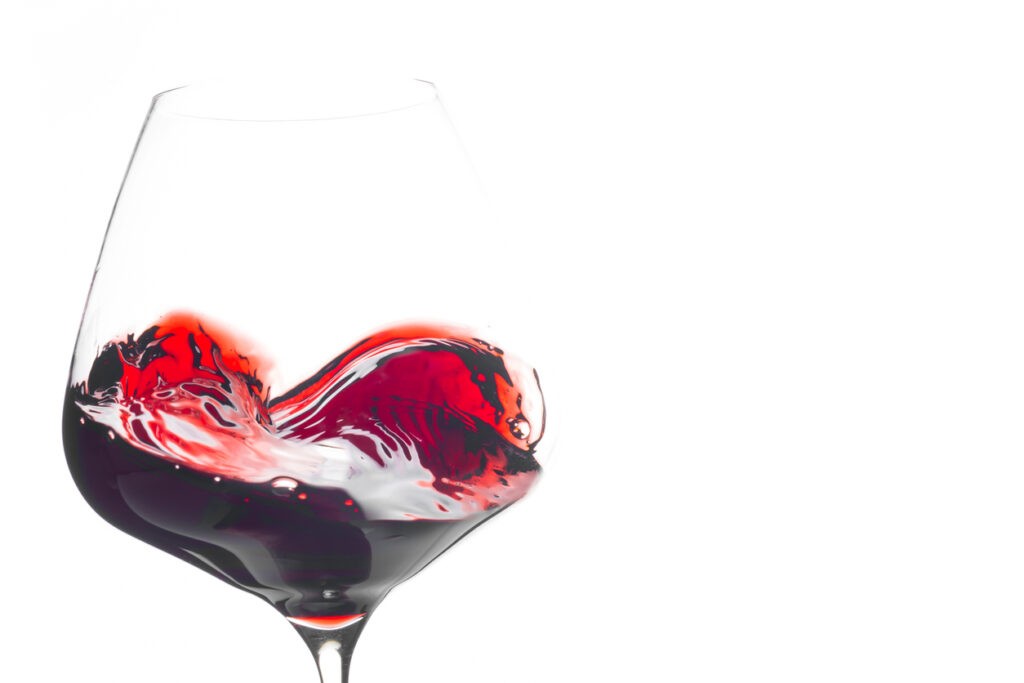
Key Takeaways
- Pinot Noir is a light-bodied and complex wine, while Cabernet Sauvignon is full-bodied and tannic
- Both wines have distinct taste profiles and mature differently through the aging process
- Serving suggestions and food pairings play a key role in enjoying and appreciating each wine
The Basics of Pinot Noir vs Cabernet Sauvignon
Origin and Regions of Pinot Noir vs Cabernet Sauvignon
Pinot Noir grapes originate from the Burgundy region of France. They are also grown in other regions such as California, Oregon, and New Zealand. The grape prefers a cooler climate, resulting in the delicate and light-bodied wines it is known for.

Cabernet Sauvignon grapes, on the other hand, are another red grape variety, but it comes from the Bordeaux region of France. It is a popular grape grown in numerous regions worldwide, including Napa Valley, Chile, and Australia. The grape adapts well to various climates, contributing to the bold and full-bodied wines it produces.
Color and Appearance of Pinot Noir vs Cabernet Sauvignon
The Pinot Noir grapes have a thinner skin, which results in their wines having a lighter color. Typically, its hues range from a pale ruby to a garnet. Pinot Noir wines tend to be more transparent, allowing light to pass through easily. The light color of the wine also indicates its lighter body and delicate flavor profile.

Cabernet Sauvignon wines exhibit a deep ruby to purple color, thanks to the grape’s thicker skin and higher concentration of color compounds, or anthocyanins. These wines are usually opaque and have a full body, resulting in a more robust and intense flavor profile.
Taste Profile of Pinot Noir vs Cabernet Sauvignon
Pinot Noir Flavor Profile
Pinot Noir is a lighter-bodied red wine, known for its delicate and smooth pinot noir taste. Its flavors often include red fruit, such as cherry, raspberry, and strawberry, accompanied by subtle earthy tones and hints of spice. Due to its thin skin, Pinot Noir grapes produce wines with moderate tannin levels, lending themselves to a softer mouthfeel.
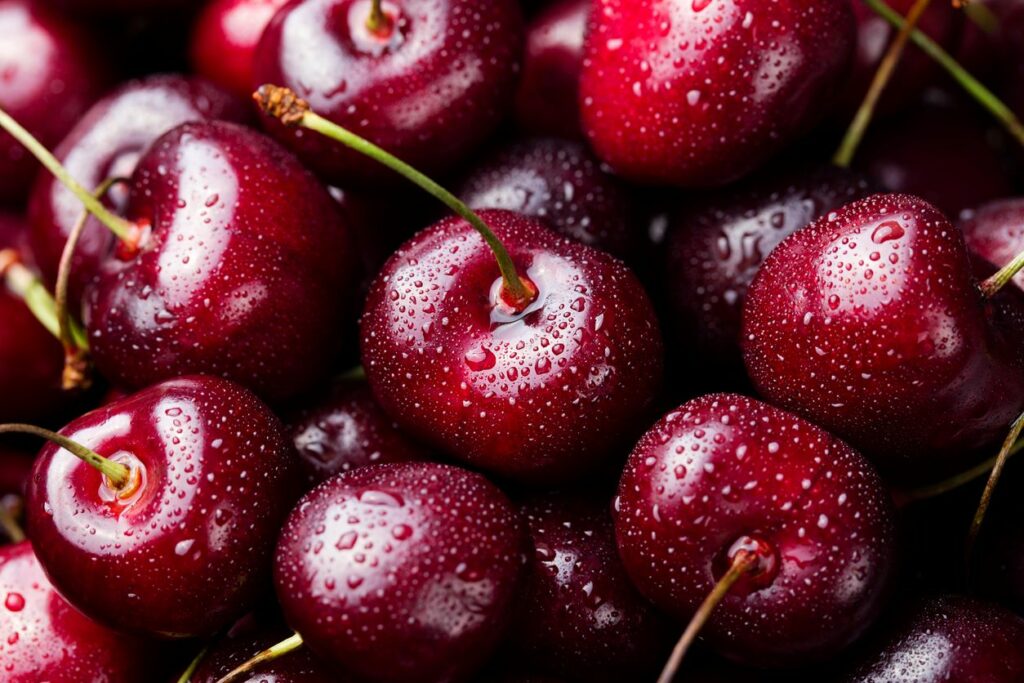
Acidity
In terms of acidity, Pinot Noir tends to be higher, contributing to its bright and refreshing nature. This makes it a versatile food-pairing wine, complementing a wide range of dishes. A well-aged Pinot Noir red wine may exhibit more complex notes, such as mushrooms, dried leaves, and forest floor, adding depth to the overall flavor profile.
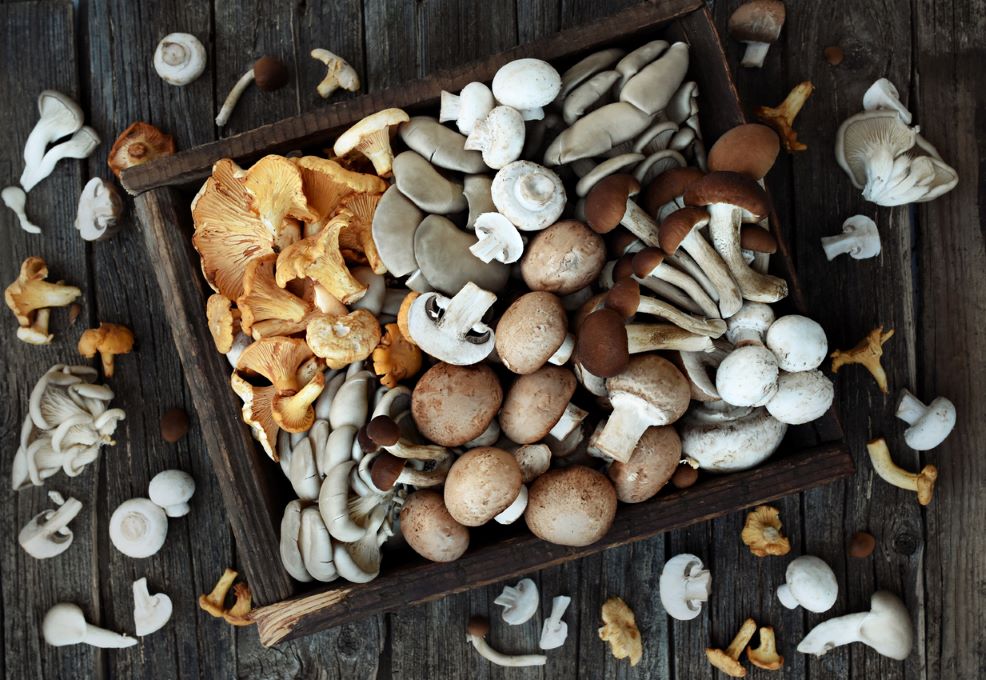
Cabernet Sauvignon Flavor Profile
Cab Sauv, on the other hand, is a full-bodied red wine with bold flavors and notable tannins. Cabernet Sauvignon taste is characterized by pronounced dark fruit flavors, including blackcurrant, blackberry, and plum, often accompanied by noticeable oak influences, such as vanilla, cedar, and tobacco.
Tannins
The tannin structure of Cabernet Sauvignon gives the red wine a firm and robust mouthfeel, while its moderate acidity provides balance to the fruit-forward profile. As the wine ages, additional flavors may emerge, such as leather, truffle, and dark chocolate, enriching the overall tasting experience.
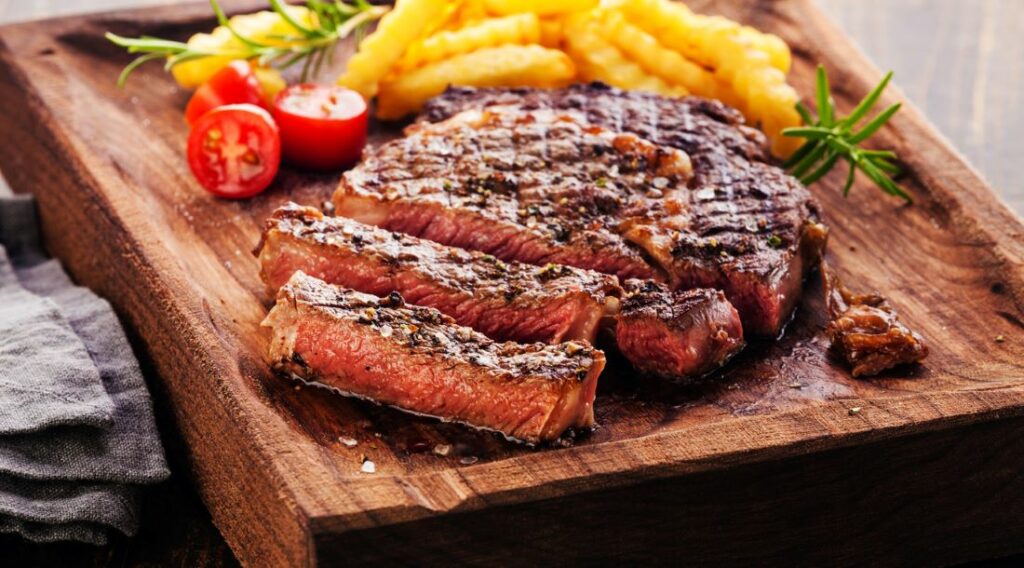
In contrast to Pinot Noir, Cabernet Sauvignon pairs particularly well with richer, more robust dishes, like grilled meats and hearty stews. Its bold structure and complexity can stand up to strong flavors, making it an ideal choice for those who enjoy powerful red wines.
Aging Process of Pinot Noir vs Cabernet Sauvignon
Pinot Noir and Cabernet Sauvignon both have unique aging processes that contribute to their distinct flavors and characteristics.
Oak Ageing of Pinot Noir
Pinot Noir is a delicate red grape variety known for its thin skin and low tannin content. Due to these properties, Pinot Noir wines are typically aged in French oak barrels, which impart a subtle and elegant influence on the wine.
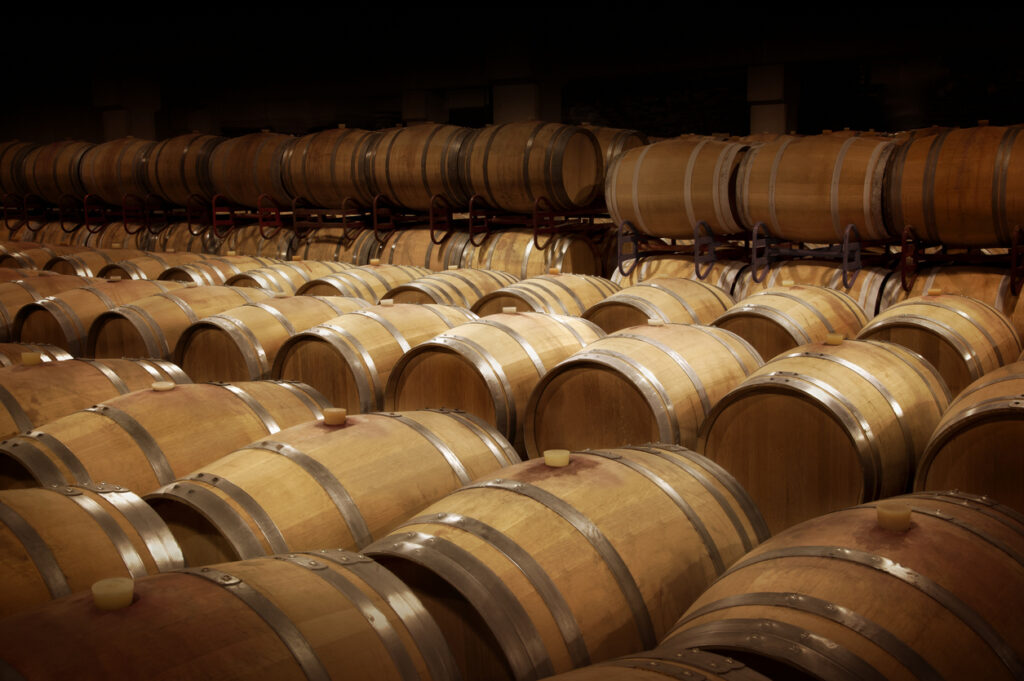
The aging process for Pinot Noir usually takes between two and five years, although some finer examples can age gracefully for up to 10 years. During this time, the wine’s flavors evolve, becoming more complex and developing notes of earth, mushrooms, and dried fruits.
Oak Ageing of Cabernet Sauvignon
Cabernet Sauvignon, on the other hand, is a robust and powerful red grape variety with thick skins and high tannin content. This makes it suitable for extended aging in oak barrels, often using a mix of French and American oak to impart additional complexity and flavor. The aging process for Cabernet Sauvignon wines can vary greatly, with some varieties requiring a minimum of three years and others maturing well for over 20 years. As the cabernet sauvignon wine ages, its tannins soften, and it develops flavors of blackcurrant, black cherry, cedar, and tobacco.

Effects of Oak Ageing of Pinot Noir vs Cabernet Sauvignon
Aging these wines in oak barrels serves different purposes:
- Aeration: The porous nature of oak allows a small amount of oxygen to interact with the wine, leading to a softening of tannins and the enhancement of flavors and aromas.
- Flavor extraction: As the wine is in contact with the oak, it absorbs various flavors and compounds, such as vanillin and toastiness, that enhance the overall profile of the wine.
- Structural complexity: The interaction between wine and oak imparts additional complexity and depth in the resulting wine.

Food Pairings of Pinot Noir vs Cabernet Sauvignon
Pinot Noir Food Pairings
Pinot Noir is a versatile wine that pairs well with a variety of dishes. Its light-to-medium body and bright acidity make it a great match for poultry, game, and earthy flavors like mushrooms.
- Poultry: Roasted chicken, duck, and turkey are excellent choices, particularly when prepared with herbs and spices that complement the wine’s fruity notes.
- Game: Venison or game birds, like quail or pheasant, can be enhanced by the delicate flavors in Pinot Noir.
- Vegetables: Earthy mushroom dishes and roasted root vegetables also pair nicely with this wine.
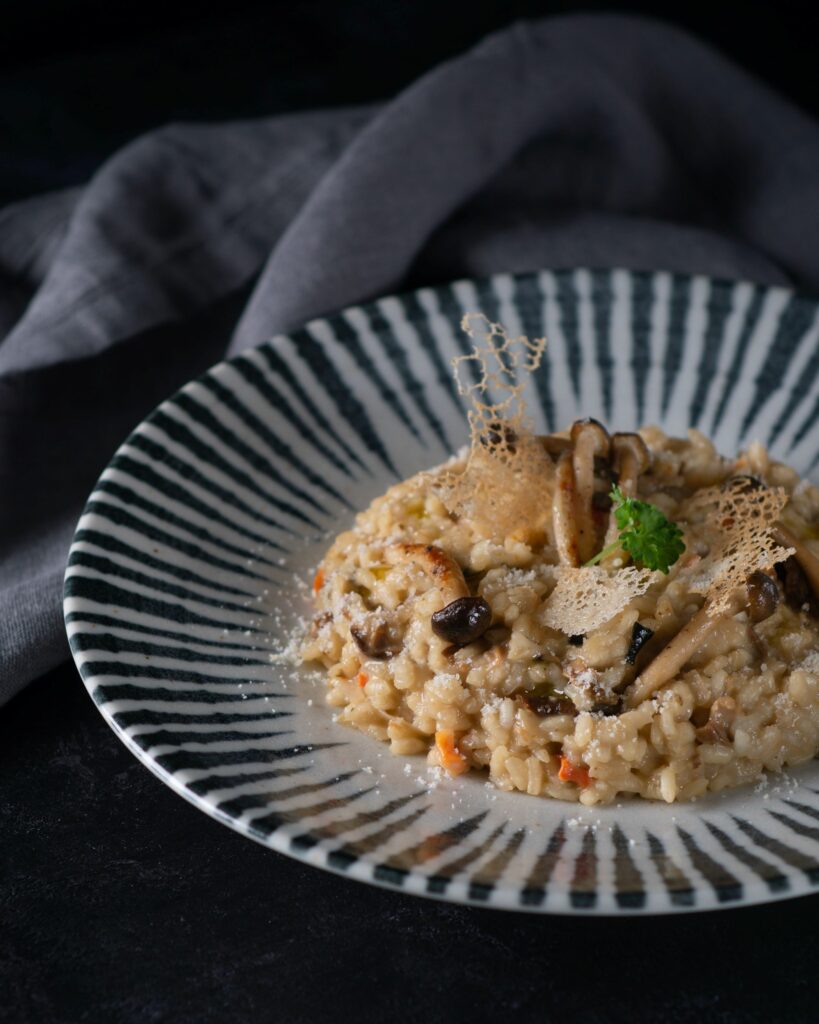
Cabernet Sauvignon Food Pairings
Cabernet Sauvignon, with its full body and bold tannins, is a perfect match for rich and savory dishes. It can stand up to the robust flavors of red meats and bold cheese pairings.
- Red Meats: Grilled or braised beef, lamb, and game meats such as venison bring out the best in Cabernet Sauvignon.
- Sauces: Flavorful sauces like peppercorn or red-wine reductions can also enhance the pairing.
- Cheese: Strong, aged cheeses like cheddar or Gouda are ideal choices to enjoy with Cabernet Sauvignon.
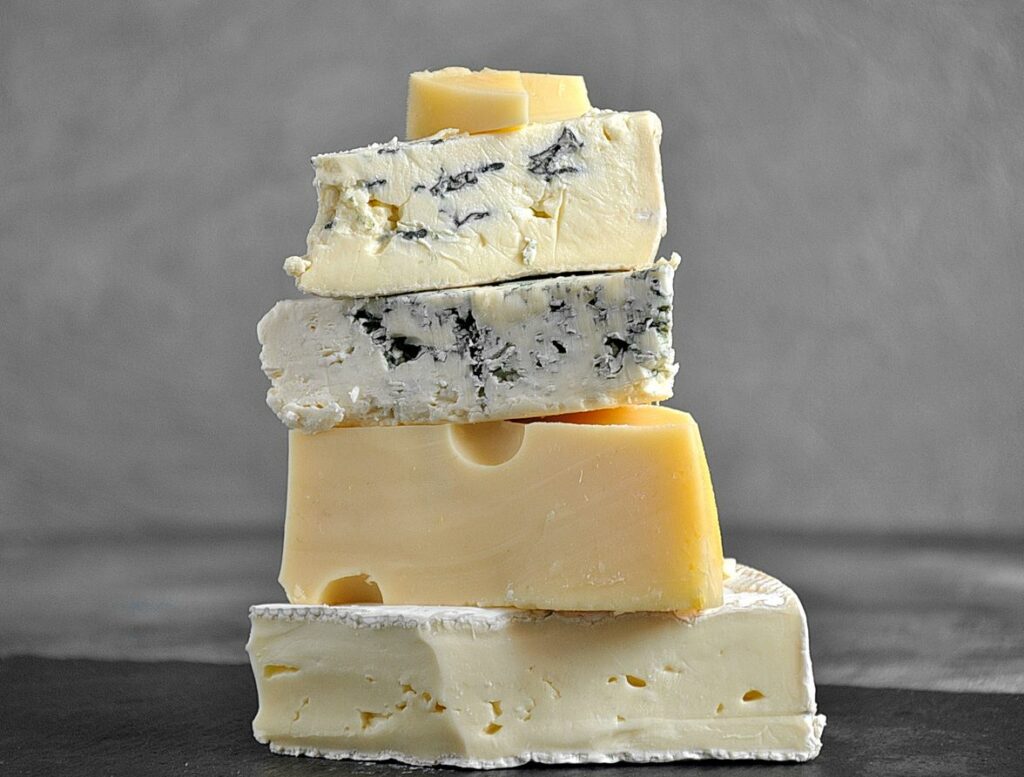
Popular Brands and Labels of Pinot Noir vs Cabernet Sauvignon
Notable Pinot Noir Brands
Domaine de la Romanée-Conti is a highly-regarded Pinot Noir producer from the Burgundy region in France. Their wines are known for their elegance, depth, and complexity.
Williams Selyem is an American winery specializing in Pinot Noir from California’s Russian River Valley. Their wines are fruit-forward with silky textures and bright, high acidity throughout.
Felton Road hails from New Zealand, with their Pinot Noir wines from Central Otago receiving high praise for their purity of fruit and distinctive minerality.

Prominent Cabernet Sauvignon Brands
Château Mouton Rothschild is a historic winery in Bordeaux, France, producing some of the world’s finest Cabernet Sauvignon-based wines with exceptional structure and aging potential.
Robert Mondavi Winery is a prominent American Cabernet Sauvignon producer located in Napa Valley, known for their opulent fruit flavors, richness, and balance.
Penfolds is an Australian brand that produces the iconic Grange, a predominantly Cabernet Sauvignon blend reflecting the unique terroir of the Barossa Valley.
A few other well-regarded Cabernet Sauvignon brands include:
- Caymus Vineyards (Napa Valley, USA)
- Screaming Eagle (Napa Valley, USA)
- Ridge Vineyards (California, USA)
- Château Pichon Longueville (Bordeaux, France)
- Sassicaia (Tuscany, Italy)
How to Serve and Enjoy Pinot Noir vs Cabernet Sauvignon
When it comes to serving and enjoying Pinot Noir and Cabernet Sauvignon, there are some key differences to consider for optimal taste and experience.
Pinot Noir
A delicate, lighter-bodied red wine that is best served slightly cooler than room temperature, around 55-60°F (13-16°C). To achieve this, you can either chill the bottle in the refrigerator for about 30 minutes before serving or use a wine chiller.

It’s essential to let the wine breathe for about 15-20 minutes after opening the bottle, as this helps to enhance the complex flavors and aromas. When it comes to glassware, choose a larger, round-shaped wine glass with a wide opening to allow the wine’s aroma profile to fully express itself.
When enjoying Pinot Noir with food, consider pairing it with dishes that complement its delicate flavors. Some popular pinot noir wine pairings include:
- Poultry such as roast chicken, turkey, or duck
- Lighter meats like pork and veal
- Mushroom-based dishes
- Creamy sauces
- Mild cheeses like Brie or Camembert
Cabernet Sauvignon
This red wine is a full-bodied red wine with bold flavors that require a slightly warmer serving temperature, around 60-65°F (16-18°C). You can achieve this by storing the bottle at room temperature or using a wine thermometer to check the temperature before serving.
Like Pinot Noir, it’s crucial to let Cabernet Sauvignon breathe for approximately 30 minutes to an hour, as this helps to soften the bold tannins and unlock its layers of flavor. When selecting glassware, opt for a tall and narrow wineglass with a slightly smaller opening than the glass used for Pinot Noir, which concentrates the aroma and directs it towards the nose.
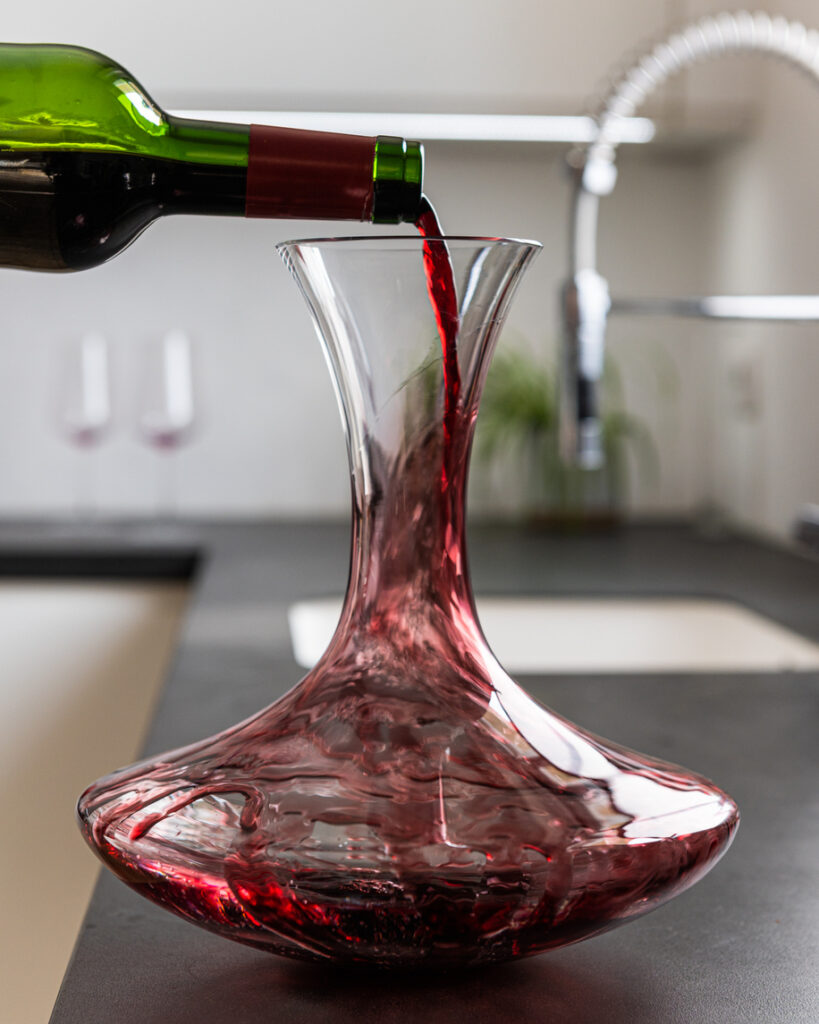
Cabernet Sauvignon pairs well with robust and hearty foods that can stand up to its bold flavors. Some recommended pairings include:
- Red meats like steak, lamb, and venison
- Hearty stews and casseroles
- Rich tomato-based sauces
- Strong, hard cheeses such as Cheddar or Gouda
- Dark chocolate for dessert
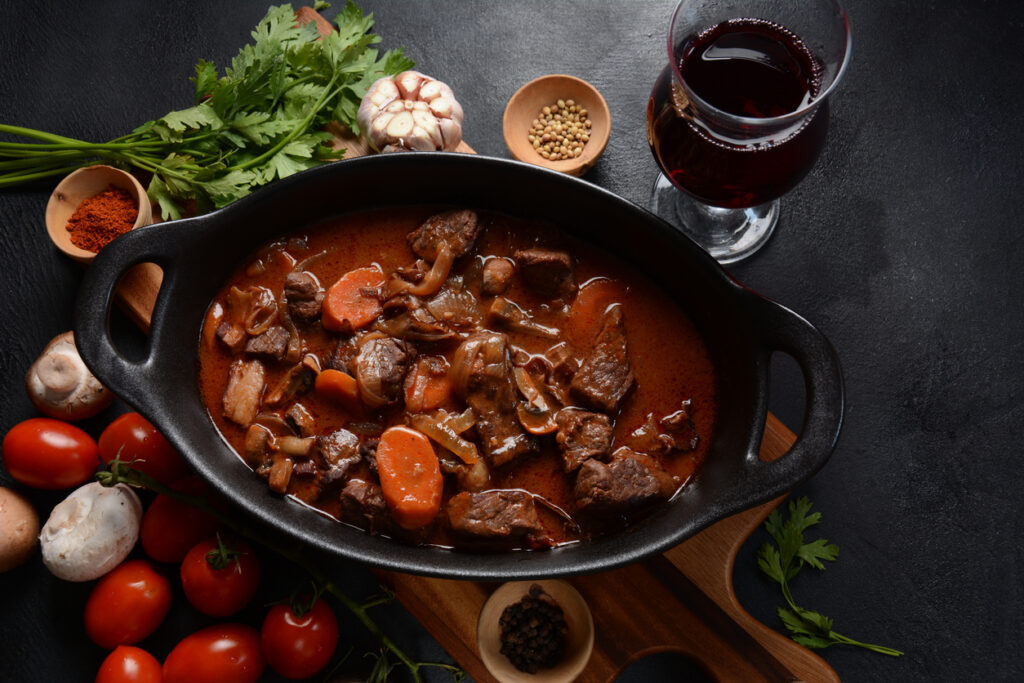
By following these serving and pairing suggestions for Pinot Noir and Cabernet Sauvignon, you can elevate your wine tasting experience and appreciate the unique characteristics that each wine has to offer.
Conclusion
Pinot Noir and Cabernet Sauvignon are two popular red wine varieties, each offering unique characteristics and flavors. While Pinot Noir is often lighter and more delicate with flavors of red fruit, herbs, and earth, Cabernet Sauvignon is a full-bodied wine with rich dark fruit, strong tannins, and notes of spice and oak.
Choosing between these two wines ultimately depends on personal preference and the occasion. For a lighter meal, such as fish or poultry, Pinot Noir is an ideal choice due to its subtlety and elegance. In contrast, Cabernet Sauvignon pairs well with heartier dishes, like red meats and rich sauces, as its robust structure and flavors can stand up to stronger tastes.

